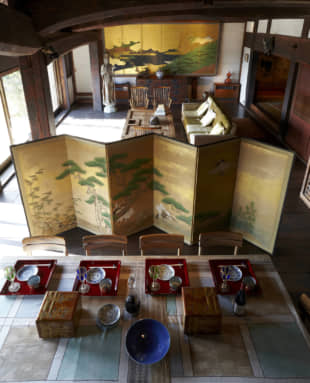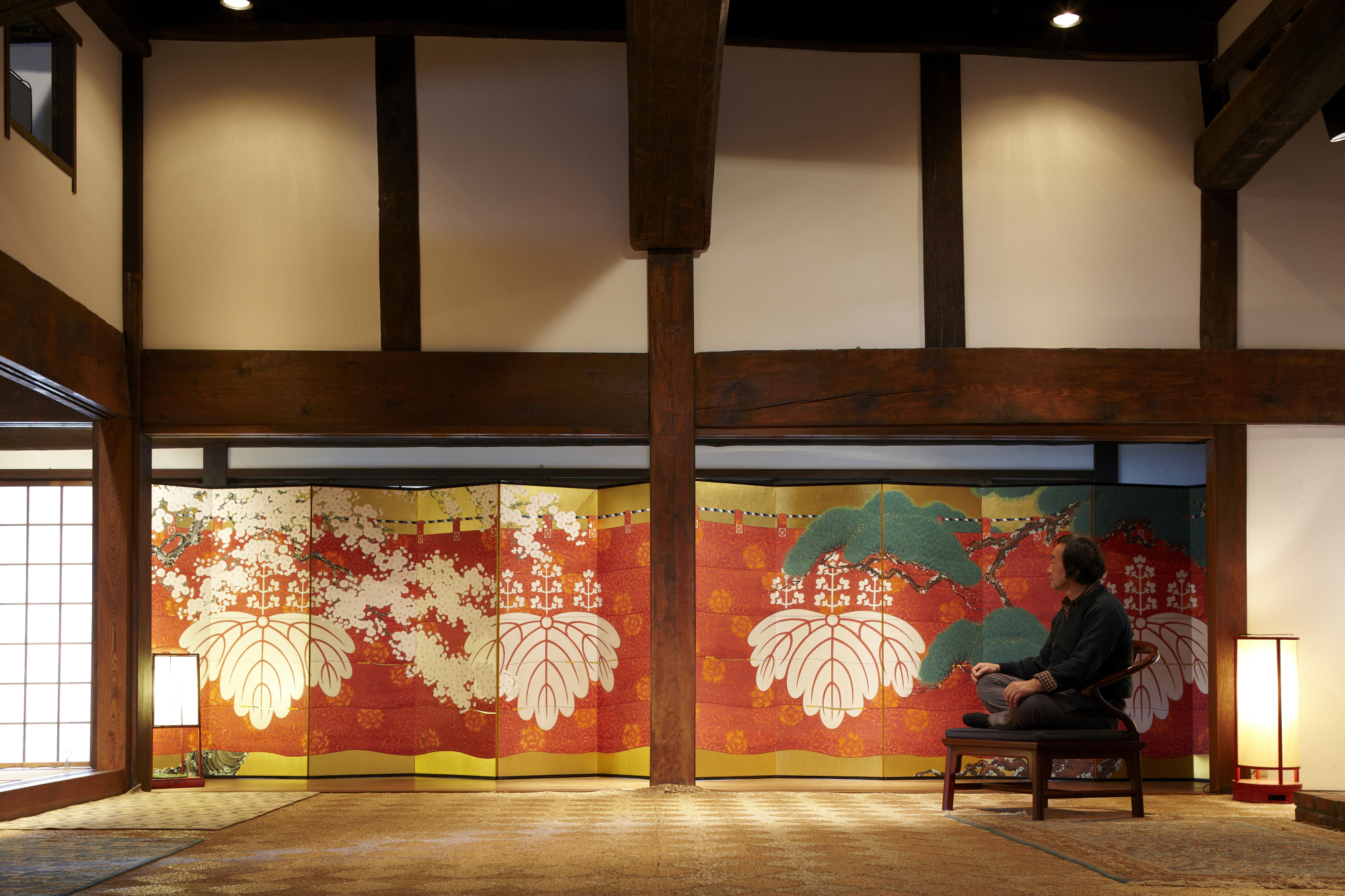Artistry UnfoldsEmbracing the traditions of antique byōbuArchitect Yoshihiro Takishita resides in the ancient capital of Kamakura, a short distance from Tokyo. In the old minka farmhouse he dismantled, moved from the countryside and re-assembled here as his home, he maintains a collection of more than 200 of the large folding screens known as byōbu. Alternating their display according to the season or the mood of the day, Takishita treats byōbu — which have all but lost their role as a furnishing in modern Japanese houses — as elements of everyday interior decor. At the Takishita residence, you can savor firsthand the relaxing ambience created by these exquisite partitionsThe Takishita house is a thatch-roofed rural structure built in the mid-Edo Period (1603-1868), which Takishita dismantled, moved from Fukui Prefecture and reassembled in Kamakura.

Visitors to the residence are greeted by room upon room of golden byōbu that sparkle amid the spartan surroundings of the traditional Japanese farmhouse. First to catch the eye is the contrast between the sturdy matte-black beams and pillars of the house and the screens covered in delicate gold leaf. After growing accustomed to the sublime atmosphere, one soon becomes intrigued by the actual pictures on the screens. The large cranes cavorting in a pine forest and the vigorous renderings of bamboo on the panels in the living room are particularly striking. Together with the crisscrossing beams and pillars, the screens unify the rooms of the dimly lit house into a single integrated space.


















With your current subscription plan you can comment on stories. However, before writing your first comment, please create a display name in the Profile section of your subscriber account page.